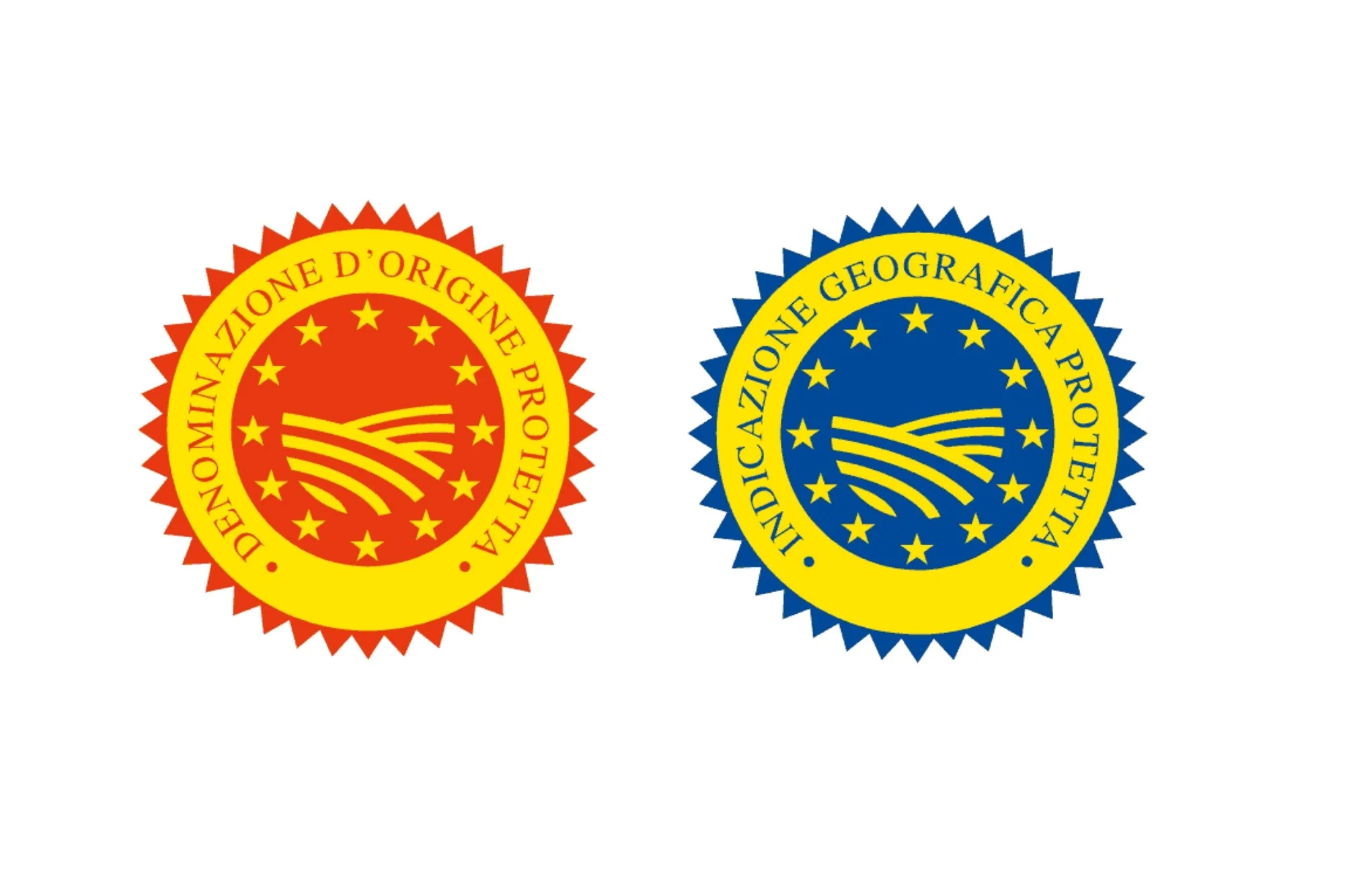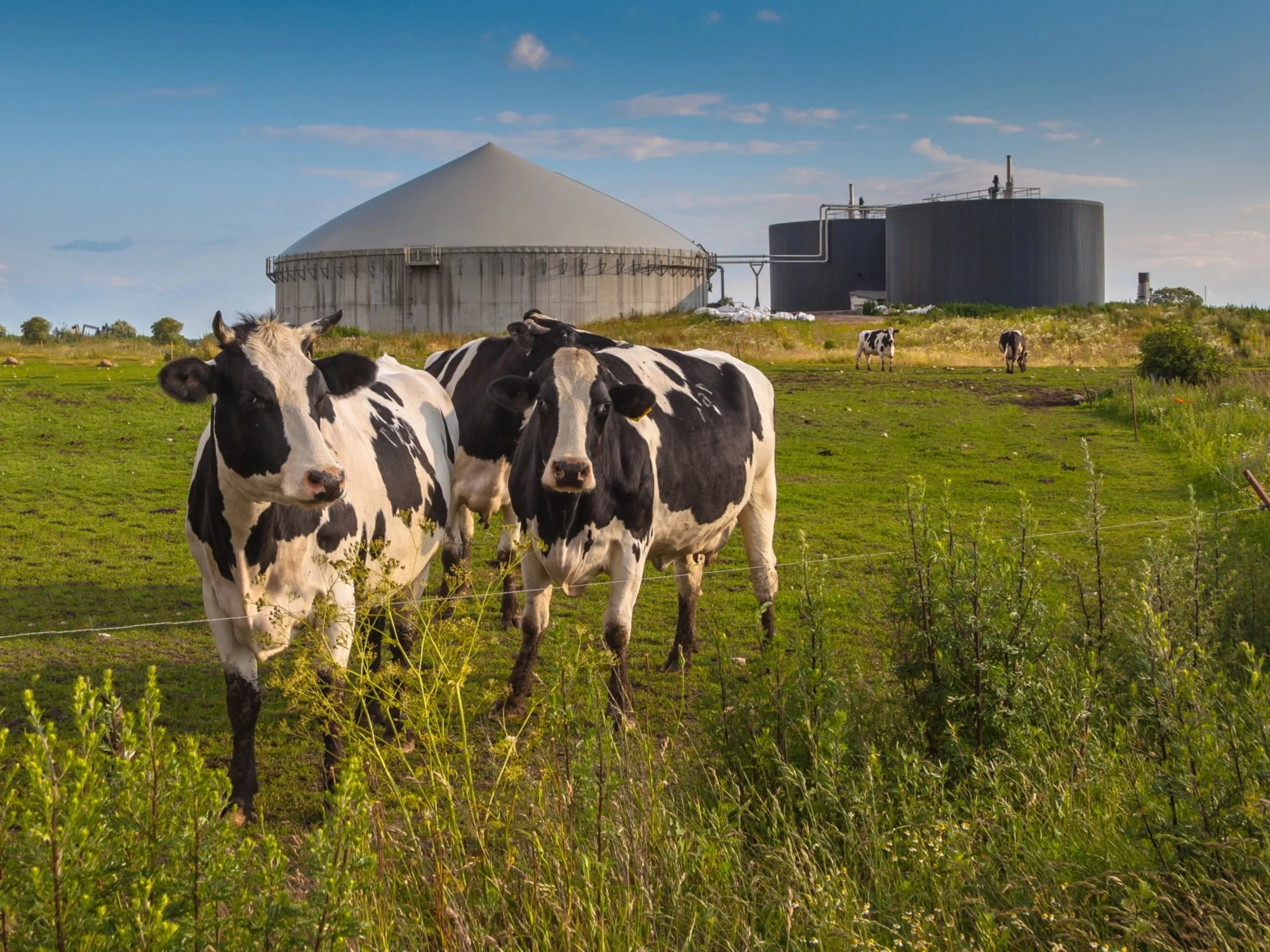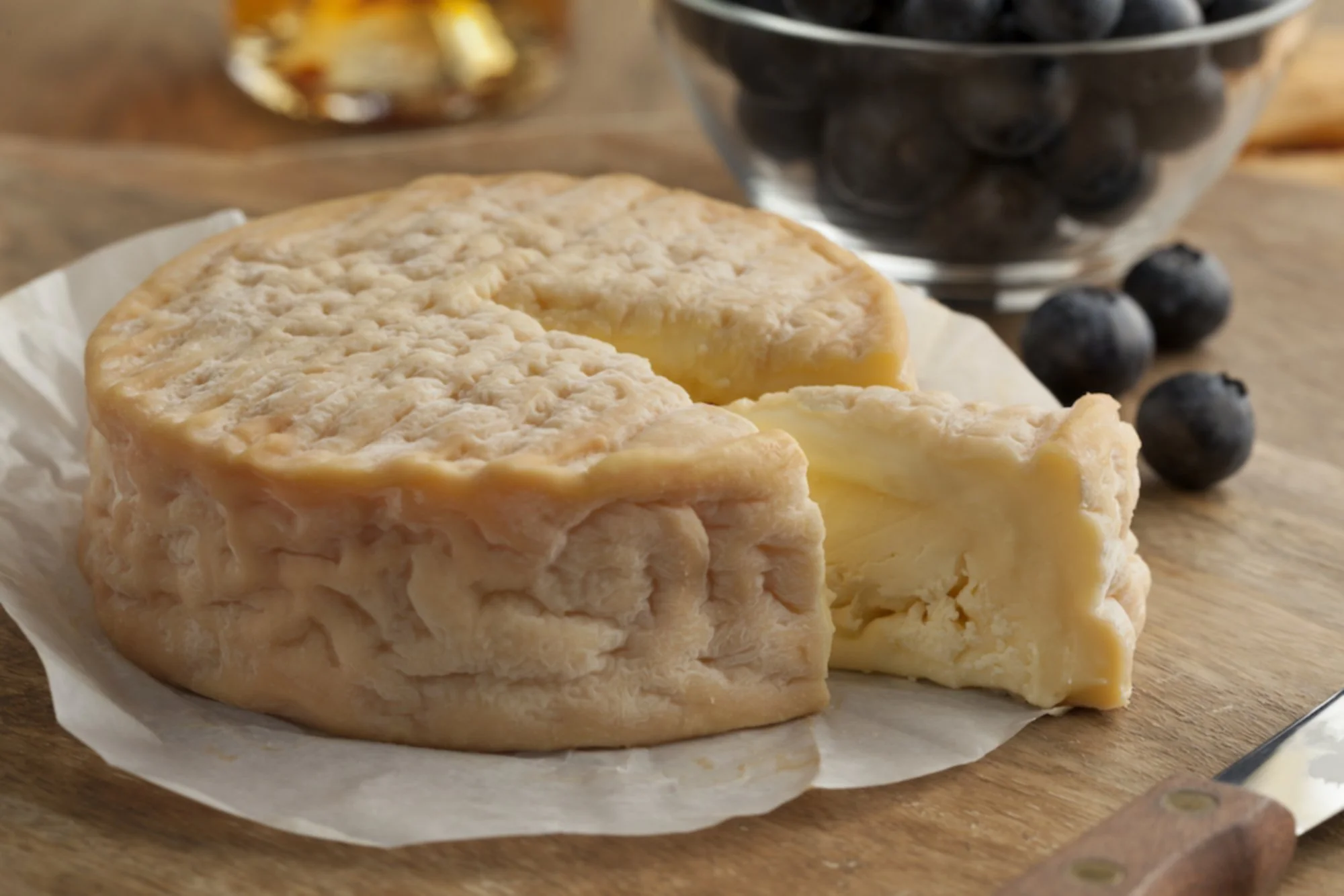6 Ways to Choose More Eco-Friendly Cheese
Limburger cheese photo credit depositphotos
Cheese production is notoriously carbon-intensive. The joy and gustatory delight a dripping dollop of pungent, creamy Limburger delivers to your tongue also delivers a serious dose of carbon to the atmosphere. Part of the problem is that it takes a lot of milk to make a wee wedge of cheese. Animals with more than one stomach chamber, like cows, sheep and goats, expel considerable methane as they digest their food, producing a gas that has more than 80 times the global warming impact of carbon dioxide in the first 20 years it reaches the atmosphere.
In addition to methane, producing and transporting the cheese is also carbon-intensive. But one piece of good news is, the cheese you put on your burger is far less polluting than the burger itself. For every 100 grams of beef, an incredible 49.89 kg of carbon is produced. Cheese, meanwhile, produces a comparatively modest 10.82 kg, but that is still much higher than bananas, rice, lab grown meat, eggs, etc. according to a report, from the largest ever analysis of the global impacts of food production.
In the end, there’s no such thing as "green" cheese, unless it’s been tragically struck by an unwelcome attack of fungi. But there are some surprising shortcuts to greener cheese that won’t require medical attention.
Think Small & Local(ish)
Jasper Hills Farm photo credit Bob Montgomery
The number of cows raised on factory farms has increased astronomically in recent decades, with a 60% increase in the number of cows at big dairy farms in Oregon alone between 2002 and 2022.
According to an article shared by the United Nations, industrial-style dairy farms produce more greenhouse gas emissions than smaller, pasture-based farms, contaminating water and soil with large volumes of manure and growth hormones released into municipal water sources, facilitate the spread of diseases from animals to humans, contribute to the rise in zoonotic diseases and spread antibiotic resistance.
One of the easiest ways to ensure you’re buying greener and tastier cheese is to purchase cheese made by a small family farm, ideally from a cheesemaker in your region to reduce the carbon footprint of transportation.
Jasper Hill Farm cheeses
Zoe Brickley, director of communications and e-commerce at Vermont’s Jasper Hill Farm, says buying local often also means you’re investing in your own community.
“For rural communities, value-added products like artisan cheese are used as a counterpoint to commodified agriculture, which has decimated their economies by extracting capital to corporate balance sheets far away and devaluing their raw materials,” Brickley says.
By relying on support for their high-value cheeses at home and in regional metropolitan markets, Brickley says they have been “able to reverse that flow of capital back to the countryside, creating more vibrant, healthy sustainable communities.”
And that’s where the ish comes in. Without the support of the artisanal cheese-loving masses in New York City, their (economic) curds would be cooked.
“We could not survive if our reach was limited to our very supportive own backyard,” she says. “Also, efficient distribution networks that exist to move commodities can be leveraged by artisan producers, which often makes for fewer emissions per pound than driving a pickup truck to a sleep farmers market an hour away.”
Look for Certifications
Geographical indication seals
If your heart is set on pecorino, gouda, camembert or emmental, another best bet is to look for a certification.
Products with geographical indication certifications such as PDO and PGI must comply with strict production rules to ensure quality and authenticity and often come from smaller producers.
Unlike non-certified products, those with the PDO designation can be traced back to their origin, guaranteeing their quality to the consumer who wants to know the history and craftsmanship of the product.
Products from animals with PDO and PGI certifications typically must be raised in the way they traditionally were, on small farms, on pasture, in a way that respects the animals, and the community in which they live.
In the U.S., your best bet is to look for farming certifications like organic or certified humane. If a cheese is organic, that means it comes from animals that haven’t been treated with hormones or antibiotics, and that the grass or feed they consume was grown organically without chemicals or pesticides. If a cheese is certified humane, it ensures the farming system is pasture-based and does not use problematic crates and small spaces that diminish quality of life and encourage the spread of disease.
Another certificiation that matters? LEED. Durae Hardy, director of marketing at Sonoma, CA’s Laura Chenel, explains that their creamery is LEED Gold Certified, which is obscure to many consumers, but an essential way to ensure the cheese is made responsibly.
“Our LEED certification reflects our commitment to sustainability in both design and daily operations,” Hardy says. “We generate solar power year-round thanks to the panels on our roof, and our building incorporates reclaimed materials and floor-to-ceiling windows that reduce the need for artificial lighting.”
Laura Chenel also manages water recycling onsite to reduce consumption.
“Cheesemaking is inherently water-intensive, so this is especially important here in California, where water is always a precious resource,” Hardy.
Buy from Amish, Quaker, Old German Baptist & Mennonite Cheesemakers
Alt Medisher Goat Cheese photo credit Goot Essa
This may seem like a strange tip, but the Amish, Quakers and Old German Baptists are, in many ways, the O.G. back to the land hippies. The Amish are inherently eco-friendly because their religion and lifestyle requires that they avoid all modern conveniences, which entails eschewing cars and favoring horse-drawn buggies, and generally requires relying on renewable energy for farm production.
That kind-to-the-earth approach extends to their philosophy regarding animals, says Amish farmer and Goot Essa’s founder John Esh. Goot Essa was founded in 2001 by a group of six Amish dairy farmers working together to produce high quality cheese, earning a living that will ensure they can stay on their farms and maintain their lifestyles.
“We aim for lower stress, longer life and happy cows,” Esh says. “We try to keep animals cool during the summer and choosing more heat-resistant breeds, while watching for genetic traits such as feet and leg shape to help with their mobility. Better lives means better cheese.”
Quakers, who also have a celebrated culture of cheesemaking, have a foundational spiritual commitment to environmental responsibility. Many actively work to reduce their carbon footprint, with several Quaker organizations divesting from fossil fuels and restricting investment to the lowest carbon businesses.
In Ireland and England, there is a strong community of Quaker cheesemakers, with Cashel Blue being the most internationally beloved example. (Even Queen Elizabeth loved Cashel Blue).
Like the Amish and Quakers, Old German Baptists prioritize traditional, non-carbon intensive lifestyles and careers. Iowa’s Milton Creamery operates without the internet, despite the viral popularity of their zesty midwestern cheddars and fantastically squeaky curds, made using fresh milk from nearby Amish and Mennonite farmers.
Alternative Energy Solutions
Biogas digester
Prioritizing animal welfare and health will also deliver tastier and more environmentally friendly cheese. But how that cheese is produced is key too.
But this will require some digging.
Producers Crave Brothers Farmstead Cheese Point Reyes, Meister Cheese Co., Fiscalini Farmstead—have invested in methane digesters. Digesters use the cow’s manure to create biogas that can be used as energy via an anaerobic methane digester, instead of allowing that methane to escape into the atmosphere. Yep, we’re talking turning poop into power.
At Crave, the energy is fed back into the neighborhood’s energy system. (For every hour the system runs, Crave generates enough electricity to power an average Wisconsin home for a month).
Meanwhile, many cheesemakers—like and Crave Cheese—are leveraging poop power. Yep, they are taking cow manure and transforming it into renewable energy.
Speaking of energy, an increasing number of creameries are getting at least some of their power from the sun. 5 Spoke Creamery in Goshen, N.Y., is at the forefront, and uses solar to drive the entire operation, from cheesemaking to accounting. Now that they’re up and running, the 200 solar panels they installed allows them to make 800 pounds of cheese a day.
Ivy’s Reserve in Somerset, England, though, takes it to the next level. One of few carbon-neutral cheese companies in the world, they work on their own and suppliers’ farms on land management, regenerative farming and energy use. This alone has reduced the carbon output for every liter of milk produced there 20% the national average.
The creamery also uses renewable solar power and energy from biogas, while reusing and upcycling their waste and packaging.
Improving Feed
Asparagopsis taxiformis credit Jean-Pascal Quod, CC BY-SA 3.0, via Wikimedia Commons
Seaweed-fed cheese, anyone? While there are few—if any—dairy farmers currently sprinkling seaweed over their cows’ post-pasture snack, there is an increasing argument that progressive, environmentally minded ranchers should do just that.
While cows typically dine on grass or grains, a new long-term study from researchers at University of California, Davis shows that adding seaweed to cattle feed can reduce methane emissions as much as 82%. (The seaweed suppresses a methane-producing enzyme in the cow’s notoriously complex digestive system).
Over five months, Ermias Kebreab, professor and Sesnon Endowed Chair of the Department of Animal Science and director of the World Food Center and Ph.D. graduate student Breanna Roque added seaweed to the diet of 21 cattle over five months. They tracked weight gain and flatulence levels and found that 3 ounces of seaweed reduced 82% of the methane emissions, without affecting their ability to put on weight.
The university released its findings in the journal PLOS ONE, writing that this insight could help ensure a significantly more sustainable road ahead for dairy and beef cattle. For anyone worried that the seaweed-rich diet will impact the flavor, early tests show that it had no effect on milk flavor.
Go for Intensity
Époisses
Not all of these tips will be easy to see just by glancing at a cheese label. But this one’s easy. Buy the stinkiest cheese you adore, because the funkier it is, the less you’ll need to please your palate. If you don't love stinky cheeses, maybe it's time to cozy up to blue cheese.
One of the easiest ways to be eco-friendly is to simply reduce consumption levels, and while we will never be ready to completely cut the cheese, a bite of Époisses de Bourgogne, Stinking Bishop or good ol’ Roquefort satisfies.








